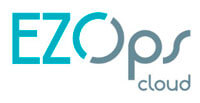In recent years, the concept of Web3 has gained significant attention within tech and finance circles. For those already familiar with the subject, Web3 represents a paradigm shift in the way we perceive and interact with the internet. Built on the principles of decentralization, transparency, and user empowerment, Web3 encompasses a wide array of technologies and innovations aimed at redefining how we use the internet.
Decentralization and Trustless Systems
At the core of Web3 is the idea of decentralization. Unlike its predecessor, Web2, which relies on centralized servers and intermediaries, Web3 seeks to create trustless systems through the use of blockchain technology. This decentralization eliminates the need for middlemen, allowing for direct peer-to-peer interactions and transactions. By doing so, Web3 aims to democratize the internet, giving users more control over their data and digital interactions.
Blockchain and Smart Contracts
Blockchain technology plays a pivotal role in enabling the vision of Web3. Through the use of decentralized ledgers, blockchain allows for secure and transparent record-keeping, fostering trust in an inherently trustless environment. Moreover, smart contracts, self-executing contracts with the terms of the agreement directly written into code, enable automated and tamper-proof agreements, revolutionizing industries such as finance, real estate, and supply chain management.
Tokenization and Digital Assets
Web3 introduces the concept of tokenization, wherein real-world assets, such as real estate, art, or commodities, are represented digitally on a blockchain. This enables fractional ownership, increased liquidity, and opens up investment opportunities to a broader audience. Moreover, the creation and exchange of digital tokens enable new forms of incentivization and value exchange within online ecosystems, driving innovation in business models and community governance.
Decentralized Finance (DeFi) and Beyond
One of the most prominent use cases of Web3 is decentralized finance, or DeFi. Leveraging blockchain and smart contracts, DeFi platforms enable peer-to-peer lending, borrowing, and trading without the need for traditional financial intermediaries. Beyond DeFi, Web3 is also driving innovations in decentralized autonomous organizations (DAOs), non-fungible tokens (NFTs), and decentralized applications (dApps), each contributing to a more open, inclusive, and permissionless digital economy.
User Privacy and Control
In the Web3 paradigm, user privacy and data ownership take center stage. With the elimination of centralized data silos, users have greater control over their personal information, deciding how and when to share it. This shift towards user-centric data management aligns with the growing demand for privacy and security in an increasingly digital world, empowering individuals to reclaim their digital identities.
Embracing the Promise of Web3
As we delve deeper into the era of Web3, it becomes evident that the potential for innovation and disruption is boundless. From transforming finance and commerce to reshaping digital interactions and ownership, Web3 embodies a vision of a more equitable, transparent, and interconnected internet. While challenges and hurdles remain, the ongoing development and adoption of Web3 technologies signify a monumental shift towards a more user-centric, decentralized, and inclusive digital landscape. It is a future worth embracing and exploring.
